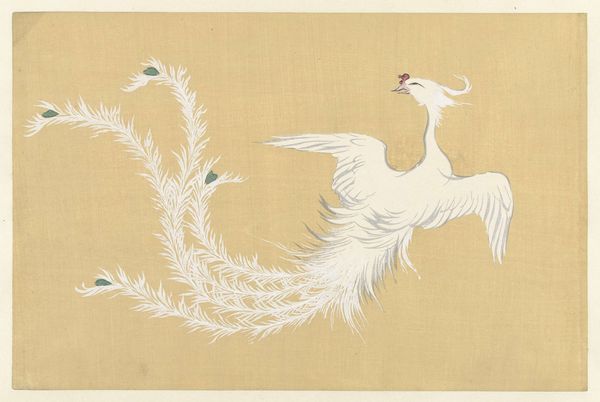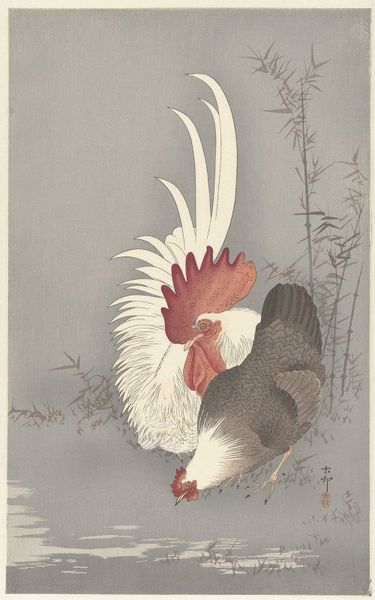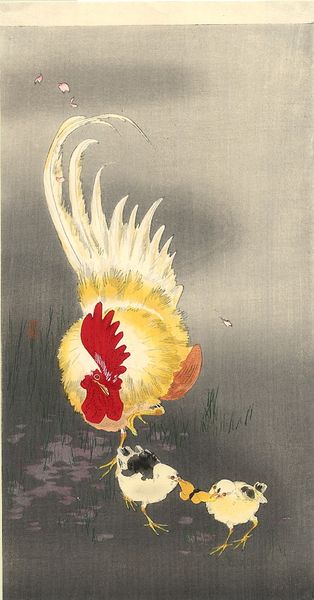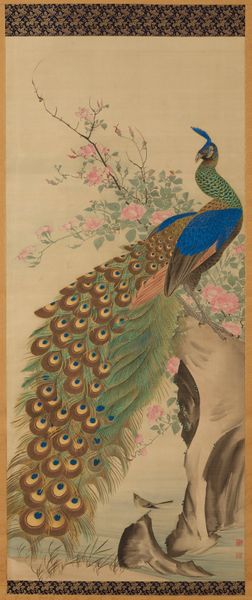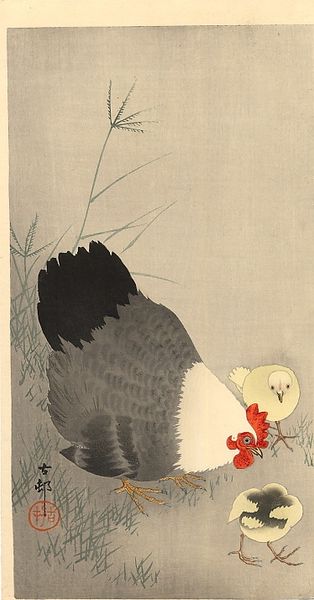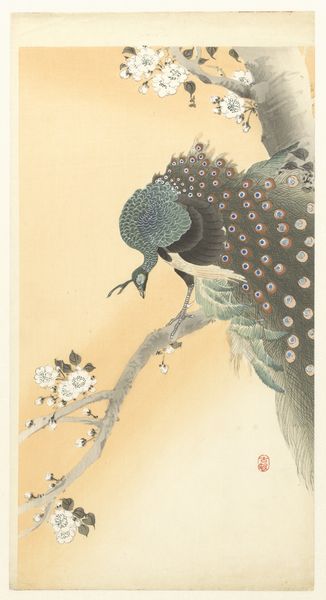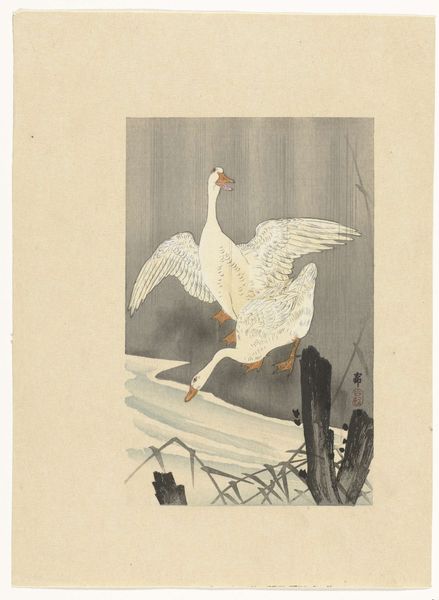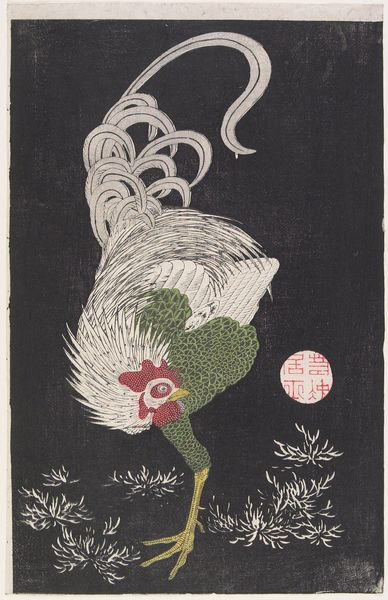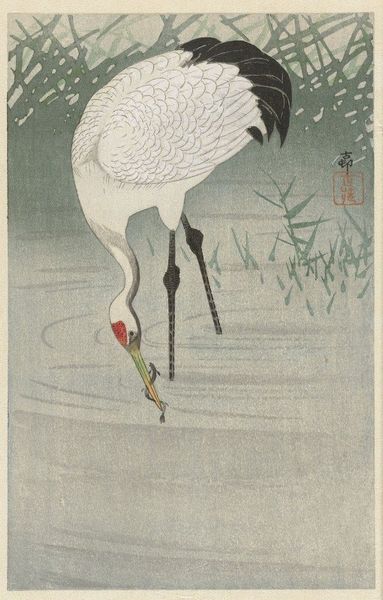
Copyright: Public Domain: Artvee
Editor: This arresting print, called "Peacock", was created by Ohara Koson between 1925 and 1936. It seems to be watercolor on paper. I am fascinated by how simple the color palette is, but the bird still has such an impressive presence. What can you tell me about this piece? Curator: It's quite stunning, isn't it? Beyond the obvious beauty, let’s consider the symbolism. What does a peacock traditionally represent? Think about pride, beauty, even immortality in some cultures. Koson’s choice to depict an all-white peacock, however, complicates this somewhat, wouldn’t you agree? Editor: That’s an interesting point. Doesn’t white usually mean purity? Does it change how a Japanese audience might interpret this, considering its departure from a vibrant, colorful bird? Curator: Precisely. The choice perhaps underscores the rarity and almost ethereal quality. In Japanese art, especially Ukiyo-e prints, animals often carry layered meanings related to virtues, seasons, or even social status. The peacock itself could be a reference to courtly elegance, yet drained of colour. Could the artist be commenting on shifting values or ideals during this period? Editor: So, you’re saying the artist perhaps uses a common image, loaded with symbolic meaning, to present almost an inversion of expectations and prompt further thinking on beauty, status and changing traditions? Curator: Indeed. And the single point of bright blue— the tuft of feathers on its head— might then be the key to the image, and the single, yet tiny reference to traditional ideas of peacock imagery. Editor: It is like the artist wanted us to really question our understanding of what we see! I’ll never look at peacocks the same way. Curator: That's the power of symbolic imagery. It can reflect and refract cultural memory in remarkable ways.
Comments
No comments
Be the first to comment and join the conversation on the ultimate creative platform.
